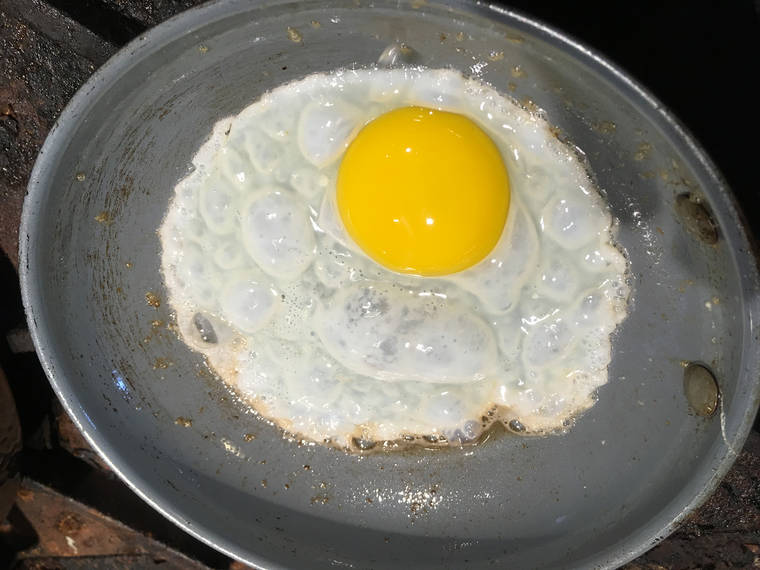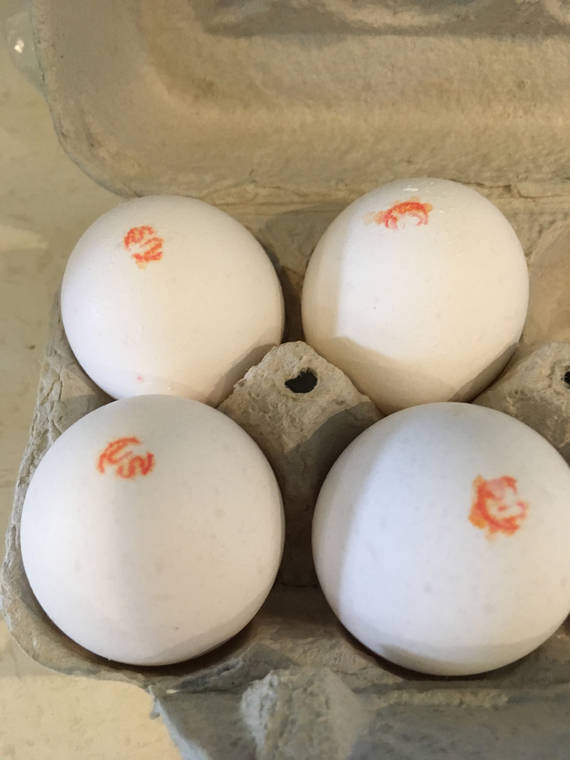Ithink we take the egg for granted. It is an important ingredient in everyone’s kitchen, but do we really know how to properly cook one?
It is, after all, a great source of protein, and when we look at the egg we find:
• One large egg weighs about 2 ounces and has 74 calories.
• The yolk contains three-quarters of the egg’s calories and the protein.
• The chalazae are a pair of twisted cords that anchor the yolk.
• The inner white is 90% water; the remainder is mainly protein.
• The outer white cooks more quickly than the inner or center white.
• The eggshell has up to 17,000 pores, which is how the egg loses moisture through time.
When you read the label on a carton of eggs, you might see the following:
• Natural tells you nothing, every chicken egg is “natural.”
• Cage-free means the chickens were not confined to cages, however many “cage-free” chickens never leave the barn.
• “Free-range” chickens have outdoor access.
• Pastured hens are allowed to roam to forage for insects and grass, which produces healthier and often tastier eggs.
Because of the fear of cholesterol, as well as a salmonella bacteria scare, between 1970 and 1995, per capita egg consumption in the United States dropped 24%. But countries such as Japan, Spain and France, three of the highest egg-consuming countries in the world, have the lowest rates of cardiovascular mortality of all the industrialized nations.
During that period, the egg white omelet grew in popularity. However, the yolk is very necessary. Egg white omelets tend to be flavorless and rubbery, and the yolk has a function, helping the body digest the white’s proteins.
The American Heart Association says a daily egg can fit into a healthy diet as long as you keep your average daily cholesterol intake to 300 milligrams.
So you can have an egg everyday, as it has 6 grams of quality proteins, a good amount of highly absorbable iron, is a good source of choline (needed for fetal brain development and in proper memory function), 25 international units of Vitamin D, 13 essential vitamins, minerals and antioxidants and 215 milligrams of cholesterol.
The egg yolks contain deep yellow pigments lutein and zeaxanthin, part of the carotenoid family, that help protect the eye against macular degeneration. Lutein and zeaxanthin are found in the eye’s lens and retina, where they help naturalize damage to cells caused by free radicals, including sunlight.
Jeffrey Blumgerg, professor of nutrition at Tufts University, claims, “Like yellow-tinted sunglasses, lutein and zeaxanthin act as filters. They protect the retina and lens by blocking blue and ultraviolet light, the most damaging rays in the light spectrum.”
According to the University of British Columbia in a new study on people with type 2 diabetes, “consuming eggs and other high-fat foods in the morning can help you feel fuller and control blood sugar levels throughout the day.”
Frying eggs
According to Jacques Pepin, there is no perfect fried egg, it is your preference. Do you like your fried egg soft and runny or hard and crispy on the edges?
This is Milk Street’s way to cook an egg, using olive oil because it contains surfactants or surface-area agents, that make it easier for the egg proteins to unfold. So eggs cooked in olive oil can link up more easily.
The egg should be at room temperature. You don’t want the proteins to go through a thermo shock. Using a nonstick pan, add enough butter to coat the pan at medium low heat. Place room-temperature eggs in pan and allow to slowly cook till the desired doneness.
Omelets
Whisk, whisk, whisk, as constant whisking keeps the eggs from forming big curds and promotes even cooking. It also makes them fluffy.
Here is Emeril Lagasse’s recipe for a light and fluffy omelet:
1/8 teaspoon salt
Pinch ground white pepper
1 tablespoon unsalted butter, melted
3 large eggs
2 tablespoons heavy cream
Place eggs, heavy cream, salt and pepper in the blender and mix until frothy, about 1 minute. Heat a saute pan over medium heat and, when hot, add the butter to the pan, swirling to coat. Pour the egg mixture into the pan. Using a rubber spatula, stir continuously and scrape down sides so as to evenly cook the mixture. Once the mixture resembles wet scrambled eggs, after 30 seconds, use a rubber spatula to smooth the eggs so they are an even depth. Cook until almost set, about 10 seconds longer, and use a rubber spatula to fold the omelet in half. Carefully slide the omelet out of the pan onto the plate.
Soft
scrambled eggs
Done right, they should have an almost custard texture. Crack eggs into a large bowl, stir with a whisk. Unlike the instructions for the fluffy omelet, avoid a whipping motion, which would create an airy foam that would become dry and crusty around the pan edge when cooked.
Pour the eggs into a cold or slightly warm nonstick pan coated with cooking spray. Starting with a cool pan prevents eggs from cooking too quickly. Stir almost constantly over medium-low heat for small, creamy curds. Remove pan from the heat while eggs are slightly runny as they will continue to cook from residual heat and transform on the plate into perfect soft-scrambled eggs.
Foodie bites
Hawaii Community College’s Culinary Arts Cafeteria is open 10:30 a.m.-12:30 p.m. today till Friday. Call 934-2559 for takeout orders.
Email Audrey Wilson at audreywilson808@gmail.com.








